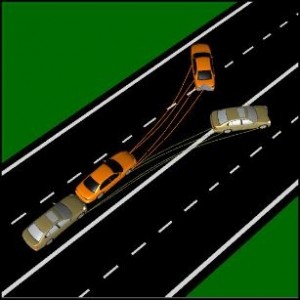The Increased Use of Forensic Animation Evidence in Court
With the increased use of computer generated imagery (CGI) in movies, people are quickly becoming accustomed to the world of digital animation. Movies like Shrek and Avatar, and video games like GT5 are blurring the boundaries between real footage and animation. Digital animation is also making its way into another area of life- the courtroom setting.
 Forensic animation evidence is quickly gaining popularity in both civil and criminal trials. This is basically where the event of a crime or accident is digitally animated in order to present jurors with a representation of what might have happened. For example, the prosecution may use a digitally created animation scene to trace the path of a bullet, JFK style. Another common use of forensic animation evidence is in the area of vehicular accident reconstruction. This requires extensive analysis and application of dynamic physics and mechanics.
Forensic animation evidence is quickly gaining popularity in both civil and criminal trials. This is basically where the event of a crime or accident is digitally animated in order to present jurors with a representation of what might have happened. For example, the prosecution may use a digitally created animation scene to trace the path of a bullet, JFK style. Another common use of forensic animation evidence is in the area of vehicular accident reconstruction. This requires extensive analysis and application of dynamic physics and mechanics.
Forensic animation was first introduced into courtroom settings as early as 1992. Since then, more and more lawyers are using animation sequences when presenting their arguments in courts. The increased use of such evidence has raised many concerns regarding whether animated evidence is admissible in court. Let’s have a look at some of the pros and cons of forensic animation evidence:
Pros:
- May help jurors and witnesses to grasp situations and concepts that might be hard to visualize
- Many people, especially the younger generation, are used to seeing real-life situations rendered in an animated format
- Forensic animation technology is evolving to become more accurate in terms of physics, graphics, etc. (thought they’re usually not as visually spectacular as say, the latest Xbox game)
- May increase an argument’s persuasiveness, as visual images tend to be more long-lasting in a person’s mind than verbal communications
Cons:
- Animation may be subject to technological bias and manipulation, as courts still need to work out a system for verifying whether a presentation is accurate
- Many consider forensic animation to be a “figment” of the producer’s imagination
- Unpredictable factors may be difficult to incorporate into the animation, such as weather conditions, faulty vehicle parts, and the mechanisms of the human body upon impact
- Motions that are actually physically impossible may be included in the animation
Many of the benefits of forensic animation depend on what the evidence is being used for in trial. To clarify, there are two basic uses of forensic animation evidence: “Substantive” animation and “demonstrative” animation.
Substantive animation is where the evidence is used to show how an event may occur based on the laws of physics and other computations. The animation is basically a visual rendition of a carefully calculated mathematical equation. On the other hand, demonstrative animation is where the sequence is used simply to show how an event could have happened given the circumstances. With demonstrative animation, the animator has much more leeway to create a number of possible outcomes.
In my opinion, the use of forensic animation evidence should be limited to substantive animations, wherein the sequences can be proved using scientific and mathematical computations. As mentioned, visual images tend to “stick” much more in a person’s mind, and showing countless sequences of hypothetical situations to a jury might skew their perception of the facts.
Also, I feel that forensic animation evidence should be limited to the analysis of mechanical systems and non-living objects, such as cars, motorcycles, bullet trajectories, or engineered systems (such as a power plant explosion). For example, forensic animation has been used in attempts to show how the human body might react to certain forces, like a gun shot wound. But in my opinion, the human body is too complex and unpredictable to be reduced to a digitally animated sequence. After all, any animation is still an artist’s rendition of an unknown event.
All that being said, it looks like forensic animation evidence will continue to be used in civil and criminal cases. In fact, I predict that it will probably become a standard part of the way cases are presented. Forensic animation will likely become a large part of the legal career field as well, and may include formal courses on the subject.
In the meantime, the evidence should be limited to substantive animations that can be calculated. Also, forensic animators should be treated like neutral, expert witnesses who can verify what might or might not be possible under the circumstances. In my opinion, the animation field obviously needs a lot of polishing before it can be fully credible. And now, back to that Shrek marathon.


Comments